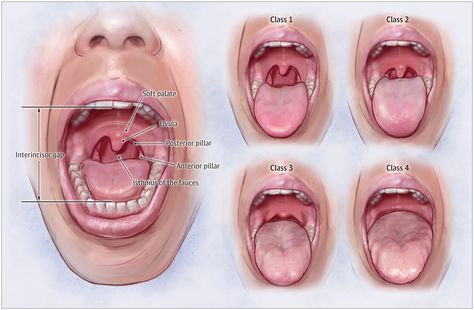Listen to the podcast here.
What is the Mallampati Score?
Health professionals use the Mallampati score in anesthesia to predict the ease of intubation. However, it can also be an indicator for determining whether or not your child suffers from Obstructive Sleep Apnea.
The physical exam to determine a patient’s Mallampati score is simple. The patient should be sitting upright with their head in a neutral position, facing forward. Then, ask the patient to open their mouth and extend their tongue. The examiner will look to see what structures can clearly be visualized in the back of the throat.
The degree to which the soft palate, or back of the throat is made visible, determines the Class number of their score. The higher the class number, the less you can see of the back of the throat. The higher their score, the more likely they will have sleep apnea, although it is not 100% predictive.
Obstructive sleep apnea (OSA) symptoms
Obstructive sleep apnea (OSA) symptoms in children can include the following:
- Abnormal breathing during sleep
- Frequent awakenings or restlessness
- Frequent nightmares
- Enuresis
- Difficulty awakening
- Excessive daytime sleepiness
- Hyperactivity/behavior problems
- Daytime mouth breathing
- Poor or irregular sleep patterns
OSA Diagnosis
However, to truly determine whether or not your child has obstructive sleep apnea, you’d have to have an overnight polysomnographic evaluation in the sleep laboratory. The evaluation would determine abnormalities in oxygen desaturation, observe patient’s sleep state, include an electrooculogram and electrocardiogram, measure the airflow at nose and mouth, and observe the chest and abdominal wall motion among other data collections.
In the pediatric age range, abnormalities include oxygen desaturation under 92%, more than one obstructive apnea per hour, and elevations of End-tidal carbon dioxide (ET CO2) measurements of more than 50 mm Hg for more than 9% of sleep time or a peak level of greater than 53 mm Hg.
If you suspect that your child may suffer from sleep apnea, contact Airway and Sleep Group for a consultation for a definitive diagnosis. We are here to help!
To learn more visit this link: https://emedicine.medscape.com/article/1004104-overview

